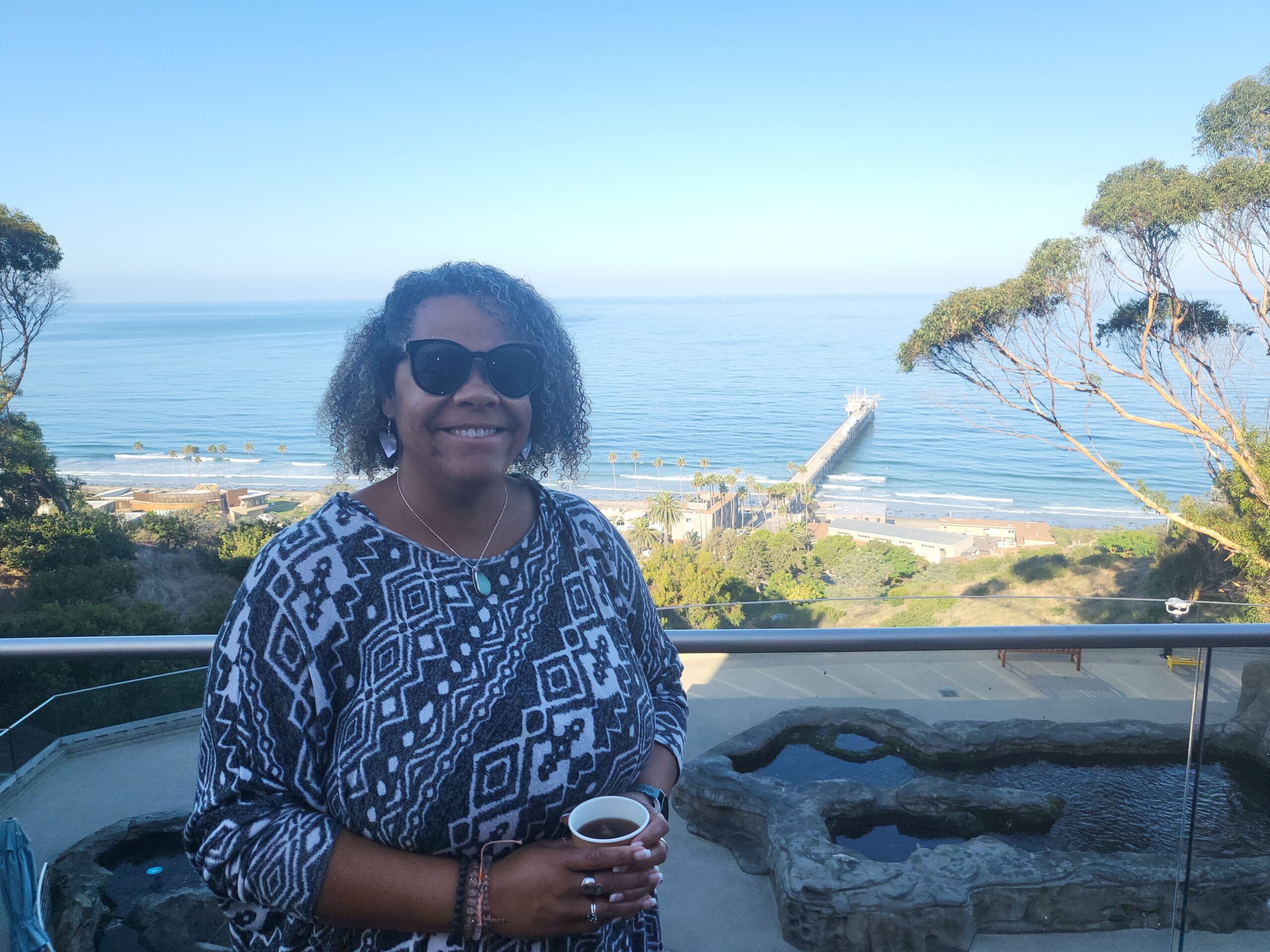
Black History Month: Q&A with Ayana Melvan

Photo credit: Ayana Melvan
Black History Month celebrates the achievements of the African American community and their critical role in United States history. Each year, in recognition of Black History Month, the National Marine Sanctuary Foundation shares stories of Black individuals who have shaped the past and present of our national marine sanctuaries.
Ayana Melvan (she/her) is currently the Director of Conservation Action for the Aquarium Conservation Partnership (ACP). In her role, Ayana is responsible for strategic partnerships, policy, and advocacy with a special focus on Ocean Justice and Equity. Ayana was previously Mystic Aquarium’s Senior Director of Strategic Partnerships through their Mission Programs. She was also one of the founders and co-chairs of the ACP Equity Work Group.
During Black History Month, I often reflect on my evolving career path that intersects anti-racism, nature-based solutions, conservation, ocean and environmental justice. Through my different roles, I’ve learned about marine protected areas including what national marine sanctuaries are and the individuals who work to support them. I’ve also observed that while my interactions with those fully invested in the conservation field is more diverse than I anticipated, there is still not enough representation of different racial identities. During Black History Month, I like to think about the pioneers and trailblazers who look like me and have inspired me to do what I do.
How is your work connected to national marine sanctuaries?
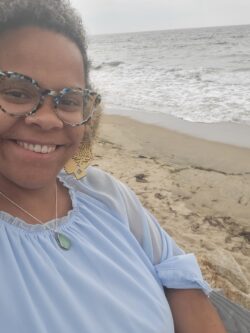
Photo credit: Ayana Melvan
In my current role as the Director of Conservation Action for the Aquarium Conservation Partnership (ACP), I am responsible for managing strategic partnerships, our policy initiatives around our conservation action plan including the protection of ecosystems and wildlife, and our advocacy efforts with a special focus on Ocean Justice and Equity. ACP aligns and supports the conservation efforts of aquariums and zoos across the United States for greater collective and individual impact on informing protected area policies and priorities. ACP members engage with habitat conservation and protection generally, and marine protected areas specifically, in several ways through: scientists who conduct research and partner with academic institutions to deepen the understanding of these environments; educators who reach millions of visitors every year connecting the public to the wonder of aquatic ecosystems; guides who act as conduits for visiting special coastal and marine places; practitioners working in the field with partners to restore ecosystems; conveners who host diverse stakeholders and foster dialogue at ACP member facilities; and advocates for science-based, equitable marine protections.
My previous experience at Mystic Aquarium prepared me for success in my new role. In my role at Mystic Aquarium, I assisted in advocating for more educational programs to be provided during out-of-school time hours that helped young people learn about the Northeast Canyons and Seamounts. My work with out-of-school time learning programs, specifically introducing young people that look like me to the Northeast Canyons and Seamounts, has me reflecting on how to authentically engage a community that looks like me and what equitable path must be paved for access to this line of work.
What/who inspired you to pursue a career in ocean conservation and environmental justice?
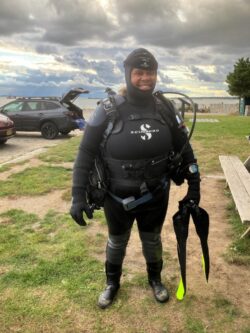
Photo credit: Ayana Melvan
I love the ocean and all its inhabitants, and I have been inspired by so many people from this world including Dr. Sylvia Alice Earle. When I was young, I was fascinated by what seemed like endless episodes of Voyage of the Mimi that we watched during our science classes in middle school. But I couldn’t help the feelings I had that not one person in the episodes looked like me – so it was a world I could only fantasize about being a part of. In parallel to watching Voyage of the Mimi in Middle School we started to talk more about Martin Luther King Jr., Rosa Parks, and Malcolm X. Through my childhood, I learned about not only these leaders through my family, but others who inspired me beyond these heroes and sheroes including Nina Simone. Nina Simone was not only a singer but also an activist who utilized her talent to create the soundtrack for the Civil Rights Movement. As a singer myself through middle and high school, when I headed to college, I was compelled to become an activist myself because these singers and activists looked like me.
As a young person about to go to college I decided to pursue the field of marine biology and maybe be a first like Ernest Everett Just, the first black marine biologist out of Dartmouth College. When I approached my guidance council, a white cis gender male, that reality was quickly squashed. Not even the inspirational words from Maya Angelou, another one of my sheroes, could silence his harsh words. He played on my insecurities and although I went to UMass-Amherst and graduated with honors, I still felt underwhelmed and lost in what I truly wanted to pursue as a career.
For 25 years I have transitioned from different types of careers and career paths until I finally landed where I am today. I was inspired to continue pursuing my desire to be involved in science. Through one of my jobs working with young people, I had the honor of meeting Stephanie D. Wilson, the first black woman in space, as part of a NASA challenge for 21st Century Community Learning Centers federal programs we were part of that gave young people who look like me first-hand experiences in solving challenges for NASA. Ms. Wilson shared with us that she never thought she would end up in space, but her project got her there. I was fascinated by her determination and the outcome of ending up in space -how cool!
How can aquariums and aquarium education and outreach programs provide equitable opportunities and connect communities (especially youth) to our ocean, coasts, and Great Lakes?
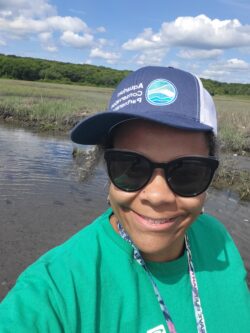
Photo credit: Ayana Melvan
Recent studies have shown that aquariums are trusted institutions in educating the public about climate change. Aquariums also are neutral spaces where people generally visit to have fun and create memories. These organizations are in the communities they serve and offer educational outreach programs to bring the aquarium to those who can’t come to them, offer national and internal programs that include community science initiatives, and incorporate traditional ecological knowledge in research studies for the animals in their collections. Aquariums take visitors to other worlds through breathtaking exhibits that they might not be able to see in person. The guests leave inspired to help with protecting the places where the animal ambassadors’ wild counterparts live in either the ocean, coasts, or Great Lakes. Our animal interpreters give visitors, young and old, an opportunity to not only learn about the animals but where they live in the world and what is impacting them. Also, practicing what we preach, and being model institutions help with our message around conservation including reducing single use plastic on campus, offering alternative options in our gift shops, to assisting with community science programs like amphibian monitoring and water quality testing along the coast. The activities guests can participate in fully emerge them in ocean and freshwater ecosystems and leave most people wondering what they can do to help protect and conserve.
Why does representation of Black individuals and communities’ matter within the field of ocean/aquatic conservation?
Historically, Black individuals that look like me have been excluded from participating in the field of ocean and aquatic conservation. We’ve often received blame for pollution and the state of the ocean and freshwater ecosystems. Representation matters in this field because black individuals that look like me were the first on the lands and water systems, they came from were the first to steward those systems. My ancestors not only stewarded the lands and waters but made sure they would be sustainable for me and the generations after me. When my ancestors were forced from their original spaces and places, they had to steward new lands and new waters and they did an amazing job. It’s important to recognize this and use our voices because we need all voices and perspectives when it comes to conservation.
What actions can the conservation community take to be more equitable and inclusive and support and uplift diverse voices in conservation?
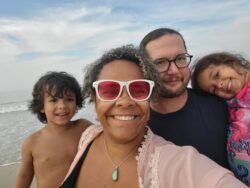
Photo credit: Ayana Melvan
My project for the past six years has centered on love and using an anti-racism approach to interrupt systems, so they include young people that look like me in an authentic way. This has led me to the work I do today. I haven’t felt this passionate in a long time and discovering just how many careers there are available in the field overwhelms me at times and disappoints me as well that I didn’t have access to them until now. Today, we do better at exposing young people to the opportunities in the world of conservation. Aquariums are uniquely set up to educate the public because visitors are attracted by the animals, they would normally not be able to see under other circumstances. Even the Northeast Canyons and Seamounts are 160 miles off the coastline I live five minutes away from. I’ll probably never actually go there but like the many young people I’ve helped bring to Mystic Aquarium to see the exhibit of the canyons I can join them in saying “wow this is what it looks like!” as they interact with the pictures, messages, videos, and mock coral reef.
This Black History Month I want to challenge the field I am now fully immersed in to look at aquariums as a solution, resource, and guide in exposing young people to all kinds of opportunities. Nature-based solutions are stronger, in my opinion, when they come from diverse innovative thoughts, cultural historical references, and lived experiences. I urge the field of conservation to continue to use aquariums to inspire young people, making them strong environmental stewards of the lands and waters. Let’s all advocate together to connect these magical places in nature with as many people, from different walks of life, as possible. I believe that involving different perspectives will impact our ecosystems and might be the best nature-based solution to heal our ocean planet.
